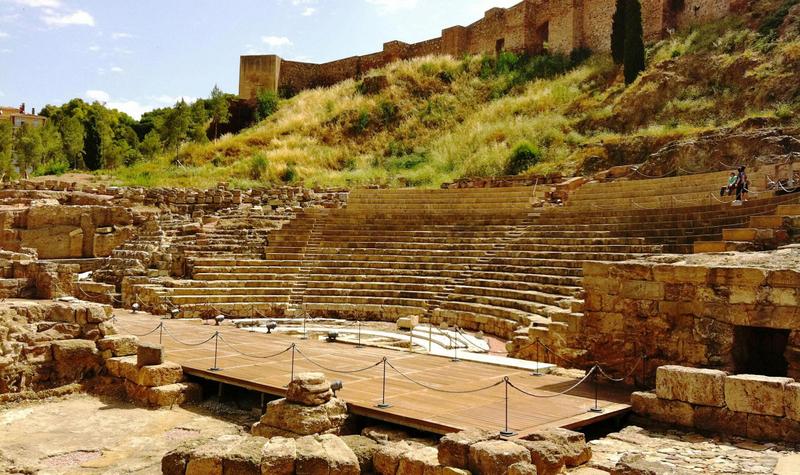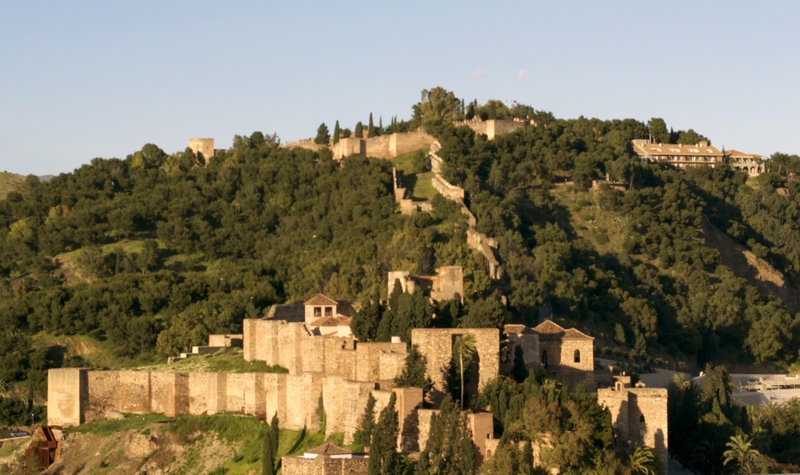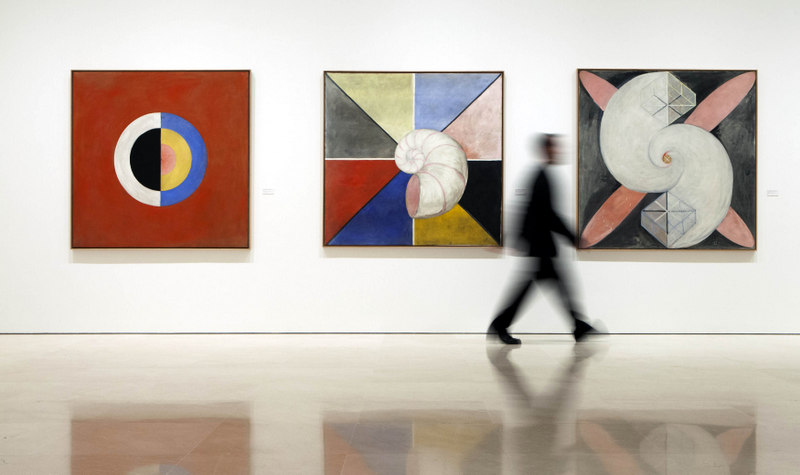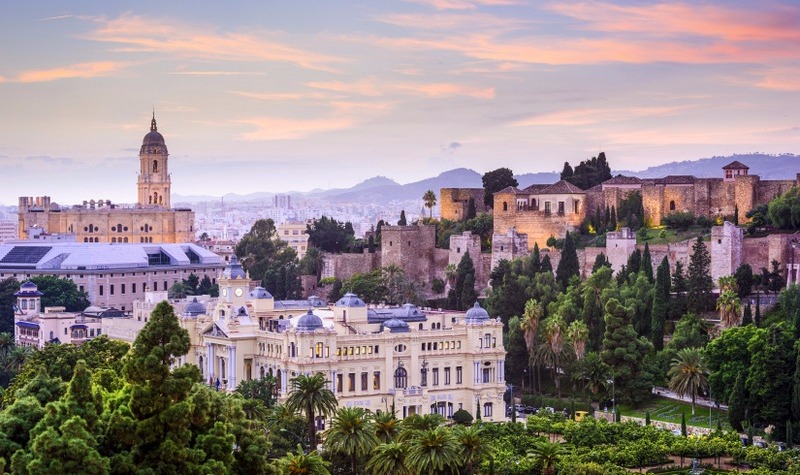Every year, the Costa del Sol attracts millions of visitors who spend their time on Marbella's beaches and dining in fine restaurants. What our tourists might not be aware of is how much history and culture our province capital has to offer.
Málaga was once ruled by the Moors, who have left a stunning series of ancient buildings behind. Aside from our colourful history, Málaga also offers a vast amount of museums, such as the Pablo Picasso Museum, a famous artist who himself was from Málaga.

The beautiful city of Málaga can be found on the Eastern side of the Costa del Sol, nestled between the sea and the sierras. Málaga Province was the take-off location for all economical and cultural matters on Spain's Mediterranean coast.
When the Moors invaded Spain in the XIII Century, they moved to the royal grounds in Granada, where a new cultural and commercial era in Spain began.
Following the victory of the Christian Kingdoms in the famous 1492 Reconquista, many historical buildings still stood in Andalucía. In the centuries to come, Málaga would become a historical and cultural hotspot. Offering a historic paradise, sandy beaches, rich culture, perfect climate and breathtaking geography, Málaga became the perfect holiday destination.
This article is split into two sections: Historic Places and Cultural Places.
Historic Places to Visit in Málaga
Málaga has an abundance of historical buildings, each pertaining to a different era. From the Roman settlement, through the Muslim ruling and the Reconquista, each of the historical masterpieces in Málaga tells a story of how the city became what it is today.
Roman Theatre
Málaga’s Roman Theatre* can be found slightly to the west of the Alcazaba de Málaga. The theatre was built during the Augustus era and it was used up until the III Century. During the Muslim ruling, what remained of the Roman Theatre served as a source for materials for the Arabs to rebuild the Alcazaba.

Since it was covered up for many centuries, it wasn’t until 1951 when the Roman Theatre was discovered by modern society. Since then, it has become one of the most popular tourist destinations in the city, and is commonly visited alongside the Alcazaba.
Alcazaba de Málaga
The Alcazaba de Málaga*, mentioned above, was the palace and fortress used by Muslim governors who took control of the city. The Alcazaba is connected to the Gibralfaro Castle.
Constructed during the XI Century, the building lays on top of the ruins of a Roman bastion. The fortress has 110 main towers and many other smaller ones surrounding the estate. The most famous of the towers if the Torre de Homenaje.

The Alcazaba's main characteristic are the three concentric walls. It served as a secure military defence to the governors who lived there. Since then, it is suspected that it may well be the most secure building in the area during the Spanish Moorish ruling.
Gibralfaro Castle
The Gibralfaro Castle is thought to be traced back to the beginning of the human settlement in Málaga. It's attached to the Alcazaba de Málaga and served as a watch post during the Moorish ruling.
While the Roman settlement came before the Moorish ruling of the city, it was the Arabs who gave structure to the fortress.

The mountain on which the Gibralfaro sits on was named 'Jabal-Faruk', translating to 'mountain of the lighthouse' or 'montaña del faro' in Spanish. During the first half of the XIV Century, Yusaf Y built the castle and the other surrounding spaces at the top of the mountain.
When the Christian Kingdom succeeded in retaking control of the city during the Reconquista in 1494, the Castillo de Gibralfaro was chosen for the city's coat of arms.
Málaga Cathedral
Málaga Cathedral, or the Catedral de Málaga, was designed by Diego de Siloé and construction began in the middle of the XVI Century. Construction halted at the end of the XVIII Century due to a royal order. The architect, Siloé was a Spanish Renaissance architect who developed the majority of his work in Andalusia.
The Cathedral combines several different styles of architecture. Elements from the Renaissance, Gothic and Baroque eras can be seen throughout the building.
The northernmost tower stands at 84 metres tall, making it the second tallest cathedral in Andalusia, after the Giralda in Seville.
The southern tower was never completed. Due to it’s unfinished state, the Cathedral of Málaga has received the nickname “La Manquita”, which translates to “The One-Armed”.
Culture in Málaga: An Overview of Some of the City’s Museums
Málaga is well-known as being a history rich city. To compliment the vast historic architecture, Málaga is home to dozens of museums, providing a most cultural experience for visitors.
Pablo Picasso is well known around the world as being one of the best artists of his era. Picasso was born and raised in Málaga, and today has a museum in his honour in the city.
Málaga Motor Museum
The Málaga Motor Museum, or the Museo Automovilístico de Málaga, can be found in one of the city's most treasured buildings: the old Tobacco Factory. The Fábrica de Tabaco* is a vast 6000 square metres of natural light and high ceilings, the perfect housing for the world's largest privately-owned classic car collection.
The car exhibition in the museum is split into different sections according on their era, ranging from 1898 through to modern day. Inside the museum, one can find a variety of cars, from the first vehicles, which were little more than horse-drawn carriages, to luxury car brands such as Rolls Royce, Bugatti and Jaguar, to name a few.

Aside from the car displays, the museum also offers seasonal exhibitions, educational programs and a vast array of activities relating to the fashion and motor industries. They display art and design in one section of the museum, to combine the fashion of the past with the different vehicles from each era.
For a more in-depth insight into the Málaga Motor Museum, see the recent article we wrote about each of the eras.
Carmen Thyssen Museum
The Carmen Thyssen-Bornemisza Museum can be found in the Palacio de Villalón* - a XVI Century palatial building in the historic centre of Málaga.

The permanent collection comprises of 230 pieces of exquisite XIX Century artwork. Whilst the collection includes art from all over the world, there is an emphasis on Andalusian art.
Among the famous world-renowned artists, one can find Málaga natives Gómez Gil* and Moreno Carbonero.
Museo Picasso Málaga
Pablo Picasso was born in Málaga in 1881 and raised in the city. As a child, it was his dream to have his artwork displayed in his hometown.
Following his death, the idea to have a museum in his honour was put forward by his grandchildren. Christine and Bernard Ruiz Picasso donated their grandfather's artwork to the museum. Their vision of changing the course of modern art was created with the help of the Junta de Andalucía.

There are 233 pieces of art that are at the Picasso Museum on a permanent basis. They tell the story of Picasso's revolutionary innovations and include a variety of styles and techniques.
Aside from the permanent collection, the museum also hosts seasonal exhibitions and educational and cultural activities. There is a bookshop on-site.
Buying or Selling Property in Spain? Contact Costa Space!
Costa Space is an independent online estate agency based in Calahonda providing comprehensive property services for Marbella, Mijas Costa and Fuengirola areas in the Province of Malaga.
We are a progressive and innovative agency continuing to strive for excellence through providing sound property advice to our clients and using the latest in the next generation marketing. If you're interested in buying or selling your property on the Costa del Sol, please do not hesitate to contact us.
*Linked page only displays content in Spanish.

